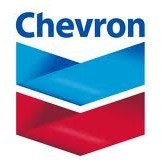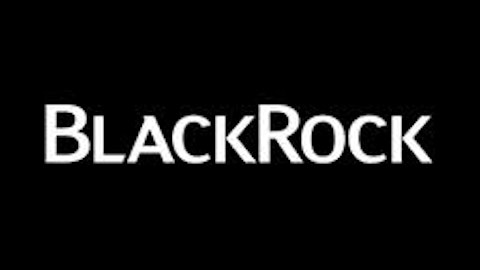Brian Rogers has been quite successful in managing the T. Rowe Price Group, Inc. (NASDAQ:TROW) Equity Income Fund. In the past 20 years, he has delivered an annualized gain of 9%, beating the S&P 500 (INDEXSP:.INX)‘s annualized gain of 8.2%.
Recently, he seemed to be bullish on the oil and gas sector, as Chevron Corporation (NYSE:CVX) and Exxon Mobil Corporation (NYSE:XOM) are the third-largest and fourth-largest positions in his portfolio. As of March, he owned nearly 5.4 million shares of Chevron and more than 6-million shares of ExxonMobil. Chevron and Exxon Mobil Corporation (NYSE:XOM) represent around 2.5% and 2.2% of his total portfolio, respectively. Should investors follow Brian Rogers into Chevron and ExxonMobil at current prices? Let’s find out.

Large proved reserves with solid reserve-replacement ratio
Both Chevron Corporation (NYSE:CVX) and ExxonMobil are integrated large oil and gas companies with global operations. At the end of 2012, Chevron had total proved reserves of nearly 11.4 billion barrels of oil equivalent, or BOE, while Exxon Mobil Corporation (NYSE:XOM)’s proved reserves were much higher at approximately 25.2 billion BOE.
While Chevron Corporation (NYSE:CVX) had about 6.5 billion of barrels of liquids in its proved reserves, the natural-gas reserves were more than 29.2 trillion cubic feet equivalent. In terms of natural gas, ExxonMobil is considered the largest natural gas producer in the U.S., with more than 74 trillion cubic feet equivalent of natural gas proved reserves.
Both companies enjoyed a good reserve replacement ratio (RRR) in 2012. RRR is a good ratio to measure the amount of new proved reserves added to the reserve base of the company relative to the amount of oil and gas produced within the year.
I would prefer to see the RRR above 100%, meaning that the companies are adding more proved reserves than they have produced. In 2012, ExxonMobil added around 1.8 billion BOE to its proved reserves, with a RRR of 115%. Chevron reported a similar solid RRR of 112%.
Consistent increasing dividend payments
Most of Chevron Corporation (NYSE:CVX)’s earnings, $23.8 billion, or 85% of the total 2012 revenue, was generated from the upstream segment, while the downstream segment contributed nearly $4.3 billion to last year’s earnings. What interests me is the fact that Chevron is a consistent dividend-paying company, with consistent increases in dividend payments.
Chevron Corporation (NYSE:CVX)’s dividend increased from $1.43 per share in 2003 to $3.51 per share in 2012. Although Chevron has paid increasing dividends, its dividend policy still seems to be quite conservative with a low payout ratio. Since 2010, its payout ratio has fluctuated in the range of 23% to 30%.
Like Chevron, ExxonMobil has also paid increasing dividends. ExxonMobil’s dividend increased from $0.98 per share in 2003 to $2.18 per share in 2012. Its payout ratio has also been quite conservative, fluctuating in the range of 22% to 41.7%. In 2012, its payout ratio stayed at 22.5%.
Chevron is trading at nearly $116 per share, with a total market cap of $224.6 billion. The market values Chevron at only 4.6 times EV/EBITDA. ExxonMobil seems a bit more expensive. At $87 per share, its total market cap is $388.2 billion. It is valued at around 5.3 times EV/EBITDA.
If investors want to look at a much smaller energy company being valued at quite low valuation, they should look at Apache Corporation (NYSE:APA). The company’s total proved reserves are around 2.9 billion BOE, with 28% of that in the U.S. Permian Basin. Apache could be considered a good opportunistic stock to play the Permian-area as it is considered the most active company there with around 38 operating rigs.
From the dividend standpoint, Apache Corporation (NYSE:APA) is also a consistent dividend payer. Its dividend rose from $0.21 per share in 2003 to $0.60 per share in 2012. What makes me interested is that Apache seems to be much more conservative in terms of dividend policy compared to Chesapeake Energy Corporation (NYSE:CHK) and ExxonMobil. Since 2010, its payout ratio has fluctuated within a range of only 5.2% to 13.4%.
At $71 per share, Apache Corporation (NYSE:APA) is worth around $27.8 billion in market capitalization. The company is valued at only 3.4 times EV/EBITDA. At its current trading price, its forward dividend yield is only 1.1%, the lowest among the three companies.
While ExxonMobil offers investors dividends with a yield of 2.6%, Chevron’s dividend yield is the highest at 3%. Interestingly, Brian Rogers is also bullish on Apache Corporation (NYSE:APA). He currently holds around 5 million shares in the company, accounting for 1.5% of his total portfolio as of March.
My Foolish take
With global leading positions in the oil and gas sector, both ExxonMobil and Chevron Corporation (NYSE:CVX) are the good stocks for investors to hold in their income portfolios in the long run. Although Apache Corporation (NYSE:APA) does not provide investors the same dividend yield, its payout ratio is much smaller. With good assets, a conservative payout ratio and quite a low valuation, Apache Corporation (NYSE:APA) is also a good opportunity for investors at its current price.
The article Three Oil and Gas Stocks to Buy Now originally appeared on Fool.com is written by Anh HOANG.
Copyright © 1995 – 2013 The Motley Fool, LLC. All rights reserved. The Motley Fool has a disclosure policy.


